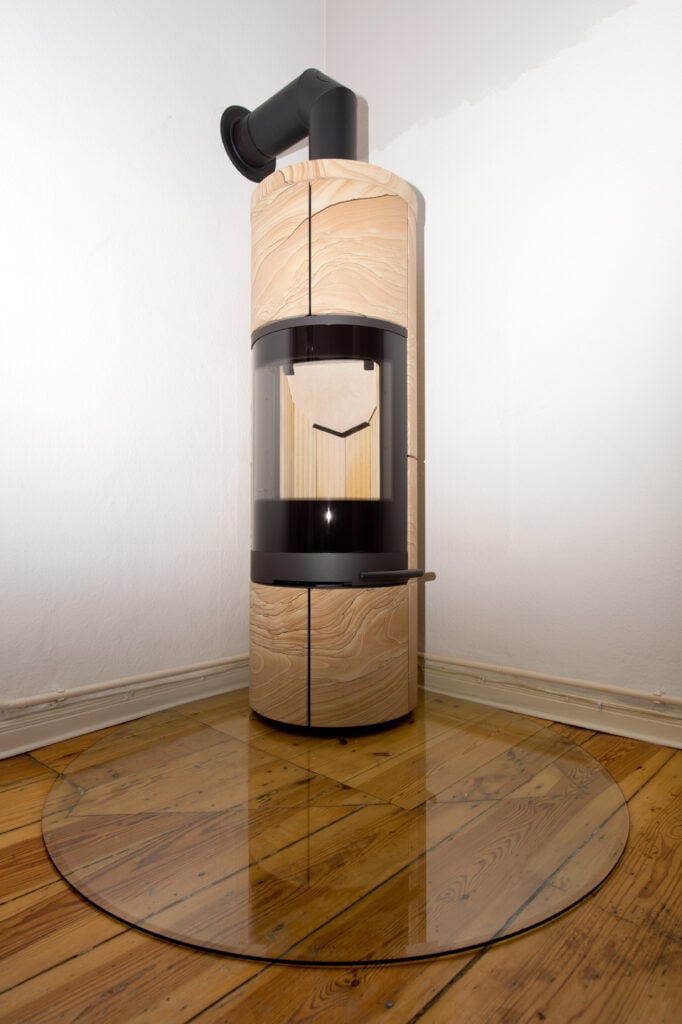November 2, 2020, 11:32 am | Read time: 3 minutes
A crackling fireplace is the epitome of coziness for many during the cold season. However, without proper fire protection, it can quickly turn into a raging inferno. Here’s how to properly protect the floor around the fireplace and what to consider when choosing a fire protection panel.
Sparks, falling embers, or radiant heat: The romance of a fireplace also has its downsides. What many are not aware of is that combustible materials can easily ignite due to the immense temperatures in the radiation area. Fire damage, such as burn holes in the flooring caused by flying sparks, is a lesser evil. To protect the floor and the home from a fire, the flooring in front of the fireplace must be properly prepared. To protect non-fireproof floors, such as parquet, wood, or carpet, spark protection plates, also known as fire protection plates, have proven effective.
Why Do You Need a Fire Protection Plate?
If the fireplace is on a potentially combustible floor covering, it must be equipped with fire protection plates. This is required by fire safety regulations. Specifically, this means that no combustible materials should be found in the area of the firebox glass and the sides of the fireplace. Only then can the chimney sweep approve the fireplace.
Those who do not have fireproof flooring but still want to upgrade their home with a fireplace can use fire protection plates. These not only protect the floor from falling embers but also distribute the weight of the stove better, preventing unwanted pressure marks on the floor. Even with inherently fireproof surfaces, a fire protection plate is a worthwhile investment. It protects floors made of materials such as marble, ceramic, or stone from ash and ember stains.
What Options Are There to Protect the Floor?
Square, rectangular, teardrop-shaped, or oval: Flame protection plates come in various designs, shapes, and materials. The choice of shape depends on personal taste, the decor, and the specific fireplace design. A suitable fire protection plate significantly enhances stoves and showcases them aesthetically. Common materials for flame protection plates include sheet steel, granite, slate, or glass.

How Large Should a Fire Protection Plate Be?
For a fire protection plate to effectively protect the floor in front of the fireplace, it must be sufficiently large. The size of the plate depends on the size of the fireplace. The fire regulation (FeuVo) of the federal states provides the dimensions for combustible floors. Fire protection plates must be at least 30 centimeters larger than the base of the fireplace. Additionally, there must be at least 50 centimeters of space in front when the fireplace door is open.
Also interesting: 3 Fireplace Alternatives Without Wood Compared
Tip: The exact dimensions of the stove and information on necessary safety distances can be found in the operating manual of the respective fireplace. For expert advice, the chimney sweep can also be consulted.

3 Alternatives to Wood-Burning Fireplaces Compared

Can You Simply Install Ovens and Fireplaces?

Is a Swedish Fire an Alternative to a Fire Bowl?
Laying a Fire Protection Plate – Here’s How
Laying a flame protection plate is simple and quick to do. However, since fireplaces are quite heavy, it is advisable to get help when setting them up:
- First, place the flame protection plate in the desired location.
- Then, set the fireplace on the plate.
- Finally, start the fireplace and enjoy the warming flames with a sense of security.

